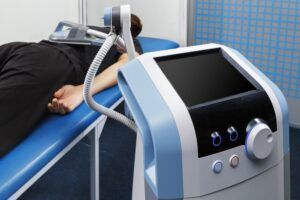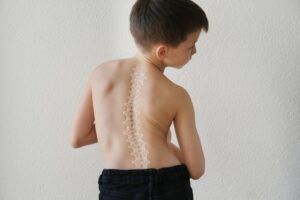Spine surgery is typically considered when non-surgical treatments fail to relieve symptoms or when a structural issue causes nerve compression, instability, or progressive deformity. For patients struggling with chronic pain, neurological deficits, or mobility limitations, surgery can offer the possibility of restored function and improved quality of life. But the decision to undergo spine surgery is not one-size-fits-all. Understanding the different types of procedures and their specific applications helps patients make informed choices alongside their spine specialist.
Each procedure is designed to address a particular spinal problem—whether it’s a herniated disc, spinal stenosis, scoliosis, or vertebral instability. The type of surgery selected will depend on the patient’s diagnosis, location of the issue (cervical, thoracic, or lumbar spine), severity of symptoms, and overall health. At Spine, Neck, & Back Specialists, Dr. Jay Reidler guides patients in Bloomfield, Englewood, and Union City, NJ through this complex decision-making process with personalized care.
Discectomy: Removing a Herniated Disc
A discectomy is a common procedure used to relieve pressure caused by a herniated or bulging disc pressing on a spinal nerve. The surgeon removes the damaged portion of the disc to eliminate nerve compression, which can cause pain, numbness, or weakness that radiates into the limbs.
This surgery is often performed as a minimally invasive procedure, meaning it involves smaller incisions and less disruption to surrounding tissues. Recovery time varies, but many patients return to normal activities within weeks. A discectomy is most effective when symptoms are localized and correlate with imaging findings.
Laminectomy: Relieving Spinal Stenosis
A laminectomy is used to treat spinal stenosis—a condition in which the spinal canal narrows and compresses the spinal cord or nerves. This surgery involves removing part of the vertebral bone called the lamina to create more space and alleviate pressure.
Patients with spinal stenosis often experience leg pain, numbness, or difficulty walking. A laminectomy can dramatically improve mobility and reduce pain, especially in the lower back and legs. In some cases, this procedure is combined with spinal fusion to provide added stability, particularly if there is evidence of vertebral slippage or significant arthritis.
Spinal Fusion: Stabilizing the Spine
Spinal fusion is a technique used to permanently join two or more vertebrae, eliminating motion between them. It is commonly used to treat conditions such as degenerative disc disease, spinal fractures, spondylolisthesis, and scoliosis.
During the procedure, bone grafts and hardware such as rods or screws are used to promote bone healing and solidify the connection. While this reduces flexibility in the fused segment, it helps relieve pain caused by instability or deformity. Recovery from spinal fusion is longer compared to other procedures and typically involves physical therapy to regain strength and function.
Artificial Disc Replacement: Preserving Mobility
For certain patients with degenerative disc disease in the neck or lower back, artificial disc replacement offers an alternative to spinal fusion. Instead of removing the disc and fusing the vertebrae, the damaged disc is replaced with a synthetic device that preserves motion.
Artificial disc replacement is most effective in younger, active patients with isolated disc disease and no significant arthritis or deformity. This procedure helps maintain spinal flexibility and may reduce the risk of adjacent segment degeneration over time.
Kyphoplasty and Vertebroplasty: Treating Compression Fractures
Kyphoplasty and vertebroplasty are minimally invasive surgeries designed to treat painful vertebral compression fractures, often caused by osteoporosis. In vertebroplasty, bone cement is injected directly into the fractured vertebra to stabilize it. Kyphoplasty takes it a step further by first inserting a balloon to restore height before injecting the cement.
These procedures are typically done on an outpatient basis and provide rapid pain relief. Patients who experience sudden back pain following a fall or minor injury, especially older adults, may benefit from these techniques.
Minimally Invasive vs. Traditional Surgery
Advances in surgical technology have made many spine procedures less invasive. Minimally invasive spine surgery (MISS) uses smaller incisions, specialized tools, and advanced imaging to reduce trauma to surrounding tissues. Benefits include shorter hospital stays, less postoperative pain, and quicker recovery.
However, not all conditions can be treated with minimally invasive techniques. More complex cases—such as multi-level fusion or severe deformities—may still require open surgery. A spine specialist will determine the most appropriate surgical method based on the specific diagnosis and anatomy of the patient.
Who Is a Good Candidate for Surgery?
Spine surgery is not the first line of treatment for most back or neck conditions. Candidates are typically those who:
- Have not improved with conservative care (physical therapy, medications, injections)
- Show signs of neurological damage (numbness, weakness, bowel/bladder dysfunction)
- Have imaging that clearly correlates with symptoms
- Experience severe, disabling pain affecting quality of life
Comprehensive evaluation, including imaging and physical exams, helps determine whether surgery will offer meaningful improvement. Dr. Jay Reidler and his team use a patient-centered approach to assess risks, benefits, and alternatives before recommending surgery.
Recovery and Long-Term Results
Recovery from spine surgery depends on the procedure performed and the patient’s overall health. Most patients benefit from a structured rehabilitation program to rebuild strength, improve flexibility, and prevent recurrence. Pain management, lifestyle changes, and ongoing follow-up care all contribute to long-term success.
While no surgery guarantees a complete elimination of pain, many patients report significant improvement in mobility, daily function, and overall comfort. Choosing the right procedure—and the right surgical team—makes a critical difference in outcomes.
Taking the Next Step with Confidence
If you’re considering spine surgery, education and expert guidance are essential. At Spine, Neck, & Back Specialists, we serve patients across Bloomfield, Englewood, and Union City, NJ with trusted diagnostics, tailored treatment plans, and advanced surgical options. We’re now accepting CIGNA PPO and many more insurance providers. Contact our office to explore your treatment options and see if spine surgery is the right next step in your journey toward relief.
Resources
- Bono, C. M., Ghiselli, G., Gilbert, T. J., et al. (2005). North American Spine Society guidelines for the diagnosis and treatment of lumbar disc herniation. The Spine Journal.
- Bydon, M., Macki, M., De la Garza-Ramos, R., et al. (2014). The long-term outcomes of lumbar fusion in patients with degenerative disease. Journal of Neurosurgery: Spine.
- Resnick, D. K., Watters, W. C., Sharan, A., et al. (2009). Guidelines for the performance of fusion procedures for degenerative disease of the lumbar spine. Journal of Neurosurgery: Spine.




